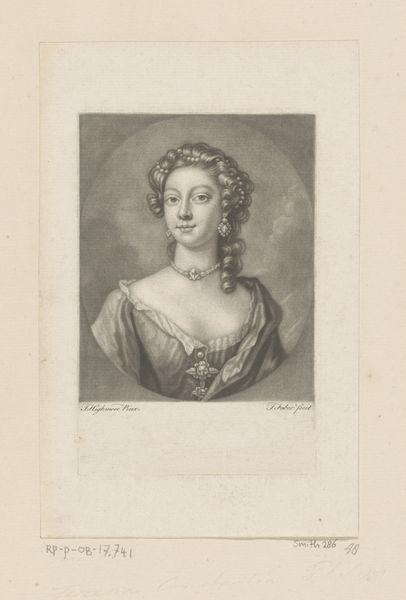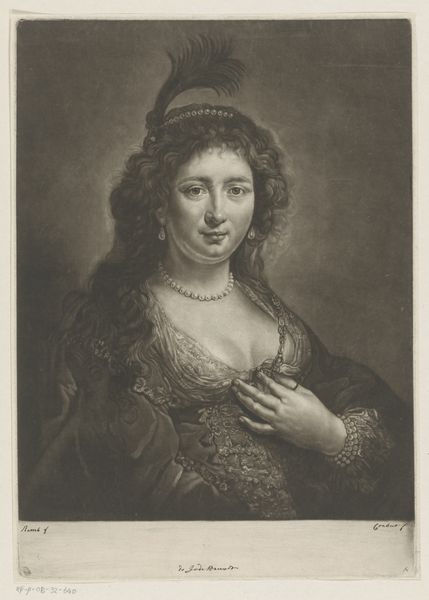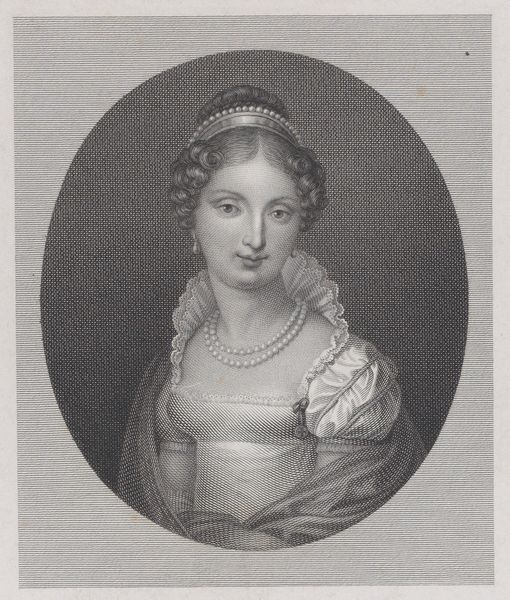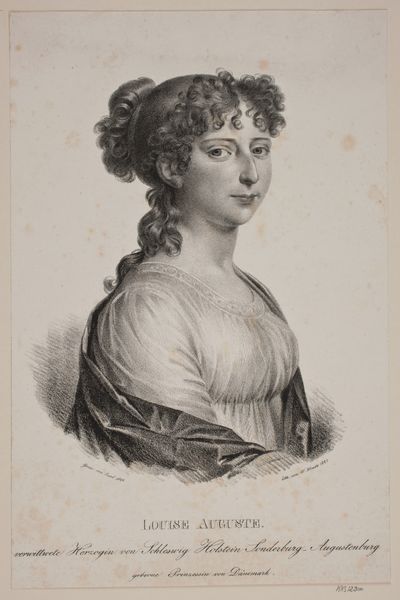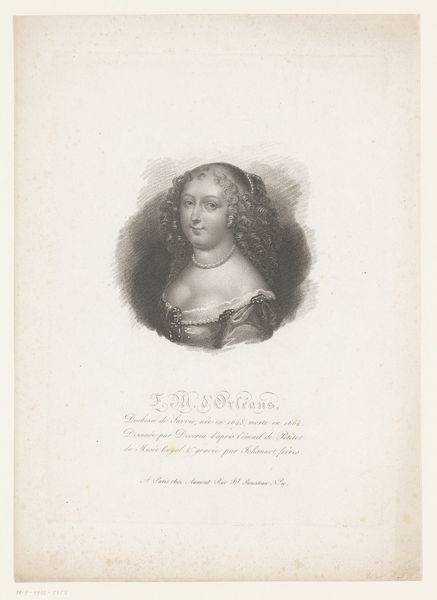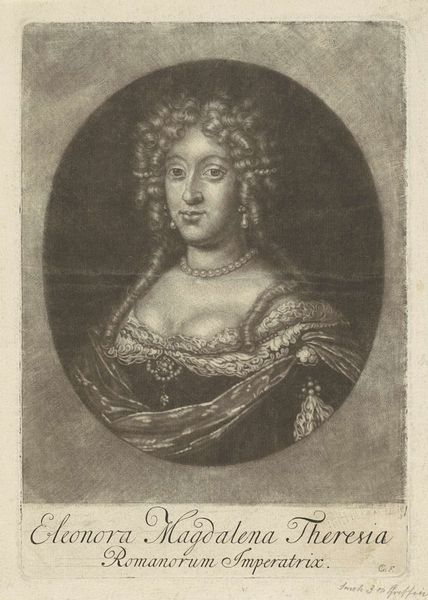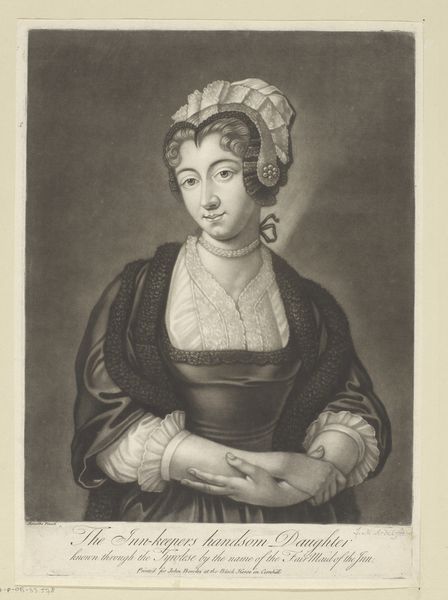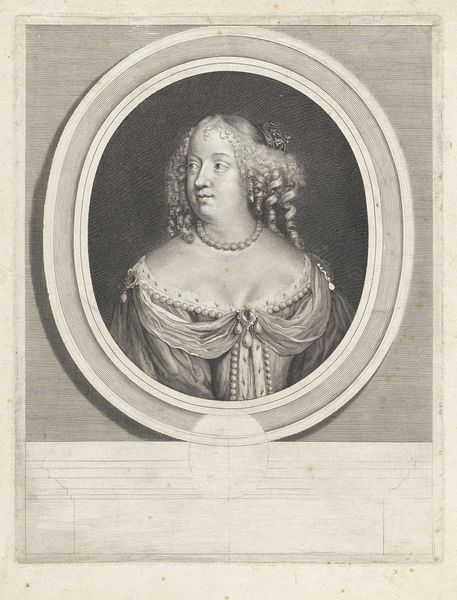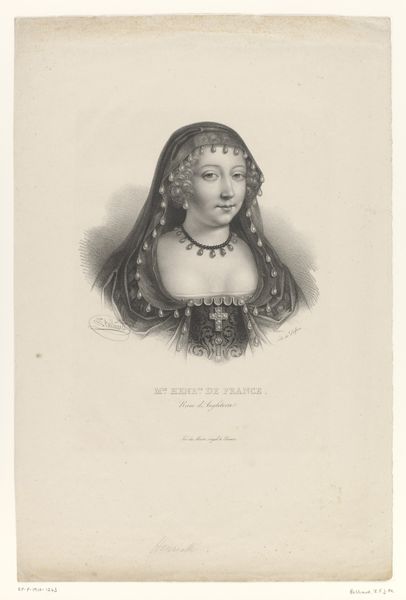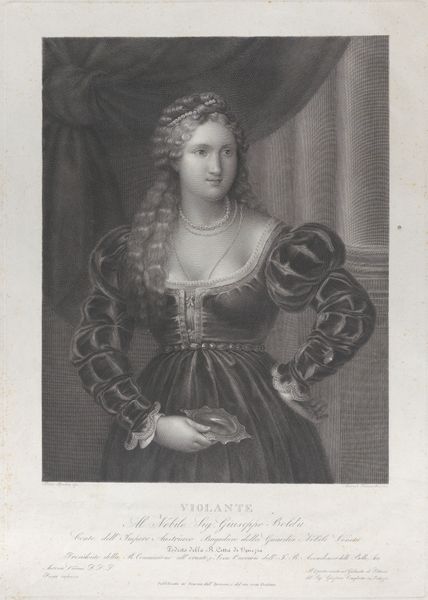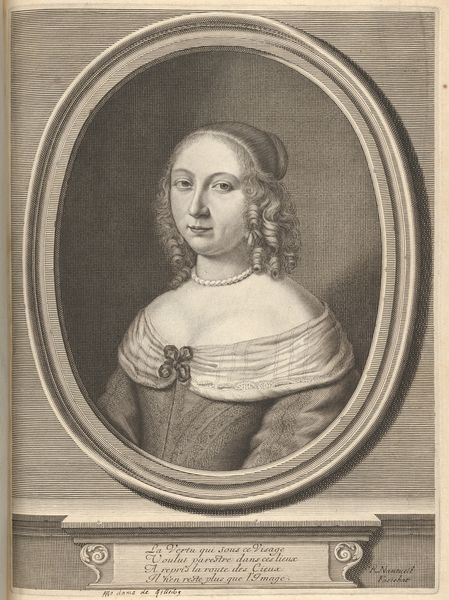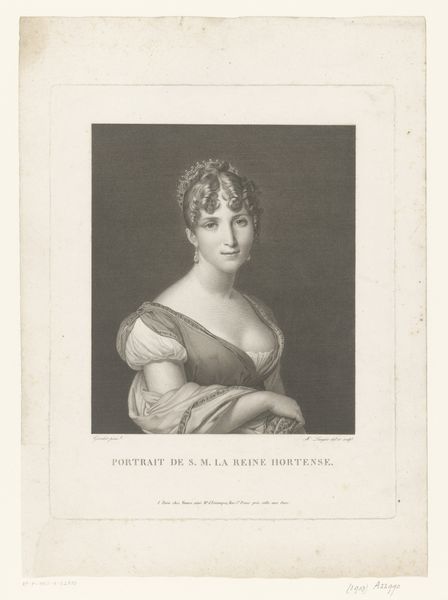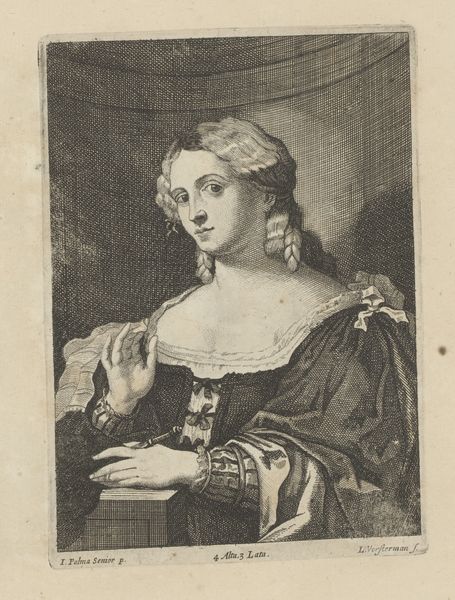
print, engraving
#
portrait
#
neoclacissism
# print
#
figuration
#
line
#
history-painting
#
engraving
#
realism
Dimensions: height 348 mm, width 299 mm
Copyright: Rijks Museum: Open Domain
Editor: Here we have a print from between 1792 and 1809, "Portrait of Madame de Sévigné," credited to Parfait Augrand. It's a delicate engraving, but what immediately strikes me is the contrast between the smoothness of her face and the intricacy of her hair and clothing. What do you see in this piece? Curator: I see the engraving itself as a document of labor and social context. The creation of such a detailed image relied on skilled craftsmanship, representing hours of meticulous work. We have to ask, what kind of labor created the pearl necklace around her neck and the fabric around her shoulders? How were these goods produced? And for whom? This wasn't just art for art's sake; it reflects a specific social hierarchy and economic system. Editor: So, you're less focused on the portrait's artistic merit and more on the materials and the process that went into creating it and portraying her wealth? Curator: Precisely. Consider the accessibility of the image too. As a print, it was arguably more widely available than an oil painting. But to whom? And what kind of viewing experience would that person had given their relationship to class, gender and other socio-political identifiers? This connects directly to consumption; who could afford these prints, and what did they signify to them? Even the 'realism' of the style is a constructed materiality - what message were the materials meant to send? Editor: That’s a really interesting way of looking at it. I hadn’t considered how the print itself is a product of its time, reflecting labor and access. Curator: The choice of engraving speaks volumes about intended audience and the relationship between art, labor, and social standing. Editor: I guess I've always thought about the artistic intention, but it’s helpful to see how the means of production and material choices really shaped its cultural impact. Curator: Exactly, art never exists in a vacuum!
Comments
No comments
Be the first to comment and join the conversation on the ultimate creative platform.
